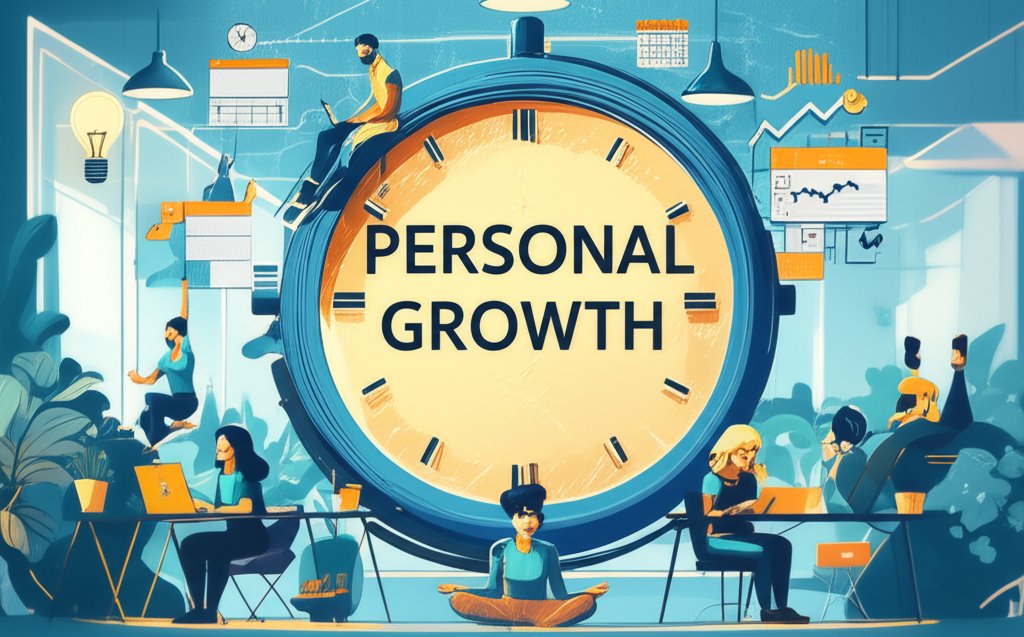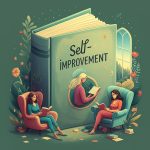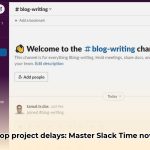Imagine a student who not only answers questions but also learns from their mistakes, becoming progressively better with each attempt. That’s the promise of recent advancements in vision-language models (VLM). These models, which combine the ability to “see” (process images) and “speak” (understand and generate text), are now demonstrating the remarkable ability to self-improve their reasoning skills through a process of reflection. This breakthrough could revolutionize how AI tackles complex, multi-modal tasks.
At a glance:
- Vision-language models (VLMs) are showing impressive capabilities in self-improvement of reasoning.
- A novel framework called R3V (Vision-language Reasoning by Reflecting on CoT Rationals) enables this self-improvement by learning from both correct and incorrect reasoning paths.
- The key is a “self-reflection” mechanism that allows VLMs to refine their reasoning based on mistakes.
- This leads to better performance on tasks requiring multi-step reasoning, such as answering questions about charts, tables, and geometric figures.
- Test-time computation, where the VLM samples multiple reasoning paths and selects the best one, further enhances performance.
The Challenge: Multi-Modal Reasoning
Multi-modal large language models (MLLMs) have made significant strides in tasks like image description and visual question answering. However, they often struggle with more complex scenarios that demand multi-modal reasoning. Think of it like this: a VLM can describe a picture of a cat sitting on a mat, but it might have trouble answering a question like, “If the cat chases a mouse, and the mouse runs behind the sofa, will the cat still be on the mat?” This requires understanding relationships, spatial reasoning, and drawing inferences.
One reason for this limitation is the scarcity of multi-modal chain-of-thought (CoT) data. Chain-of-thought reasoning, where the model explains its reasoning step-by-step, has been shown to significantly improve LLM performance. However, while vast amounts of text-based CoT data exist, similar datasets for vision-language tasks are rare and expensive to create manually. Open-source MLLMs often struggle to integrate visual clues effectively into their reasoning, and simply applying CoT prompting doesn’t always lead to better results compared to direct question answering.
R3V: Reasoning by Reflecting on CoT Rationals
To address this challenge, researchers have developed a self-training framework called R3V (Vision-language Reasoning by Reflecting on CoT Rationals). This framework allows VLMs to iteratively improve their reasoning abilities without relying on extensive human-annotated data. It’s inspired by how humans learn: by trying, making mistakes, and learning from those mistakes.
R3V consists of two key components that alternate iteratively:
- Bootstrapping positive and negative samples: The VLM generates potential solutions (CoT rationales) for a given image-question pair. Based on whether the answer is correct, these solutions are classified as positive (correct) or negative (incorrect) examples.
- Self-reflection to learn from mistakes: Instead of discarding the negative samples, R3V uses them to teach the VLM to correct its errors. This is achieved through two specialized loss functions: self-refine and self-select.
This iterative process allows the VLM to progressively refine its reasoning skills, much like a student studying for an exam. R3V learns from mistakes through reflection and achieves better learning efficiency than traditional self-training methods.
Self-Refine: Correcting Reasoning Errors
The self-refine mechanism guides the model to correct its previous reasoning errors. Essentially, it trains the model to generate a correct reasoning path when given the question and an incorrect reasoning path. Think of it as showing the model where it went wrong and asking it to fix the mistake.
Self-Select: Choosing the Right Path
The self-select mechanism addresses a common issue in MLLM reasoning: simple errors like misidentifying numbers in tables or making basic logical mistakes. It trains the VLM to select the correct answer from a set of N candidate solutions, some of which are correct and some incorrect.
This ability to self-select the best answer has a surprising benefit: it allows the VLM to improve its performance at test time by sampling multiple reasoning paths and then choosing the most likely correct one. This is what’s known as “inference scaling.”
Test-Time Compute: Inference Scaling
The self-select mechanism gives VLMs a new way to solve complex reasoning problems. By generating multiple answers, they can compare them, use an “exclusion method” to check for errors, and ultimately select the most likely correct answer.
Experiments have shown that this “test-time self-select” approach is consistently better than simply using majority voting to choose the best answer. This suggests that the self-select mechanism allows the model to learn how to compare and contrast different reasoning paths, reducing noise and improving accuracy.
Here’s a breakdown of how it works in practice:
- Generate multiple reasoning paths: Given a question, the VLM generates several different CoT rationales and corresponding answers.
- Self-select the best answer: The VLM uses the self-select mechanism to evaluate these different paths and choose the one it believes is most likely to be correct.
- Output the selected answer: The VLM presents the selected answer as its final response.
This process allows the VLM to leverage additional computation at test time to improve its reasoning performance. The more reasoning paths it samples, the more opportunities it has to identify and correct errors, leading to a higher probability of selecting the correct answer.
Experimental Results: Significant Improvements

The R3V framework has been tested on a variety of datasets that require multi-modal reasoning, including:
- TabMWP: Questions requiring reasoning about tables.
- ChartQA: Questions requiring reasoning about charts.
- CLEVR: Abstract reasoning about graphs.
- GeoQA: Geometric reasoning.
- M3CoT: Science, mathematics, and common sense reasoning.
- MiniWob: Web-based tasks requiring reasoning and planning.
The results consistently show that R3V significantly improves the CoT reasoning ability of VLMs without requiring additional labeled data. For example, experiments were conducted on Qwen-VL and LLaVA models, demonstrating substantial performance gains. The self-training framework leads to much better CoT reasoning without additional data
On the GeoQA dataset, for instance, the correct answer rate of the Qwen2-VL model improved from 52% (Test@1) to 64% using Self-Select with sampling (N=6). Majority voting, in comparison, only achieved 58%. This demonstrates that the Self-Select mechanism is not just aggregating answers but is actively learning to discriminate between correct and incorrect reasoning paths.
Addressing Common Questions and Misconceptions
Q: Does this approach require a lot of computational resources?
A: While test-time self-selection does involve sampling multiple reasoning paths, the computational cost can be managed by adjusting the number of samples. The experiments have shown that even with a relatively small number of samples, significant performance improvements can be achieved.
Q: Is this framework applicable to all VLMs?
A: The R3V framework has been successfully applied to several popular VLMs, including Qwen-VL, LLaVA, and Qwen2-VL. However, the effectiveness of the framework may depend on the base model’s initial reasoning capabilities. For models with weaker CoT abilities, a preliminary distillation stage (using a model like GPT to generate CoT examples) may be beneficial.
Q: How does R3V compare to other self-training methods?
A: R3V outperforms traditional self-training methods like STaR because it actively learns from both positive and negative examples. By incorporating the self-refine and self-select mechanisms, R3V enables the VLM to learn from its mistakes and improve its reasoning abilities more efficiently.
Getting Started with Self-Improving VLMs
If you’re interested in exploring how vision-language models can self-improve reasoning via reflection, here are some steps you can take:
- Choose a VLM: Select a pre-trained VLM like Qwen-VL, LLaVA, or Qwen2-VL. Consider the model’s initial CoT reasoning capabilities and whether a distillation stage is needed.
- Implement the R3V framework: Implement the self-training framework, including the self-refine and self-select loss functions. The original research paper provides detailed information on the implementation.
- Select a dataset: Choose a multi-modal dataset that aligns with your specific application. Datasets like TabMWP, ChartQA, and GeoQA are good options for evaluating reasoning abilities.
- Tune the hyperparameters: Experiment with different hyperparameters, such as the number of sampling paths and the learning rate, to optimize performance.
- Evaluate the results: Evaluate the VLM’s performance on a held-out test set to measure the effectiveness of the self-training process.
Looking Ahead: The Future of VLM Reasoning
The ability of vision-language models to self-improve reasoning through reflection represents a significant step forward in the field of AI. This approach not only improves performance on complex multi-modal tasks but also reduces the reliance on expensive human-annotated data.
Future research directions include:
- Exploring different self-reflection mechanisms: Investigating alternative ways to guide VLMs to learn from their mistakes.
- Scaling to even larger models and datasets: Testing the R3V framework on larger VLMs and more diverse datasets.
- Applying self-improvement to real-world applications: Deploying self-improving VLMs in applications such as robotics, autonomous driving, and medical image analysis.
As VLMs continue to evolve, we can expect to see even more impressive advancements in their reasoning abilities. This will pave the way for AI systems that can understand and interact with the world in a more nuanced and intelligent way.
Your Next Steps
The advancements discussed here offer powerful tools for anyone working with vision-language models. One practical application involves leveraging the self-selection task, enabling models to choose the most likely correct answer from candidates they generate themselves. By following the steps outlined above, you can begin to harness the power of self-improving VLMs and unlock new possibilities for your own projects.
- Wellness Fair Ideas for Work to Boost Employee Wellbeing - December 15, 2025
- Affordable Employee Wellness Fair Ideas for Any Budget - December 14, 2025
- Employee Wellness Programs Strategically Benefit Employee Health And Retention - December 13, 2025
















